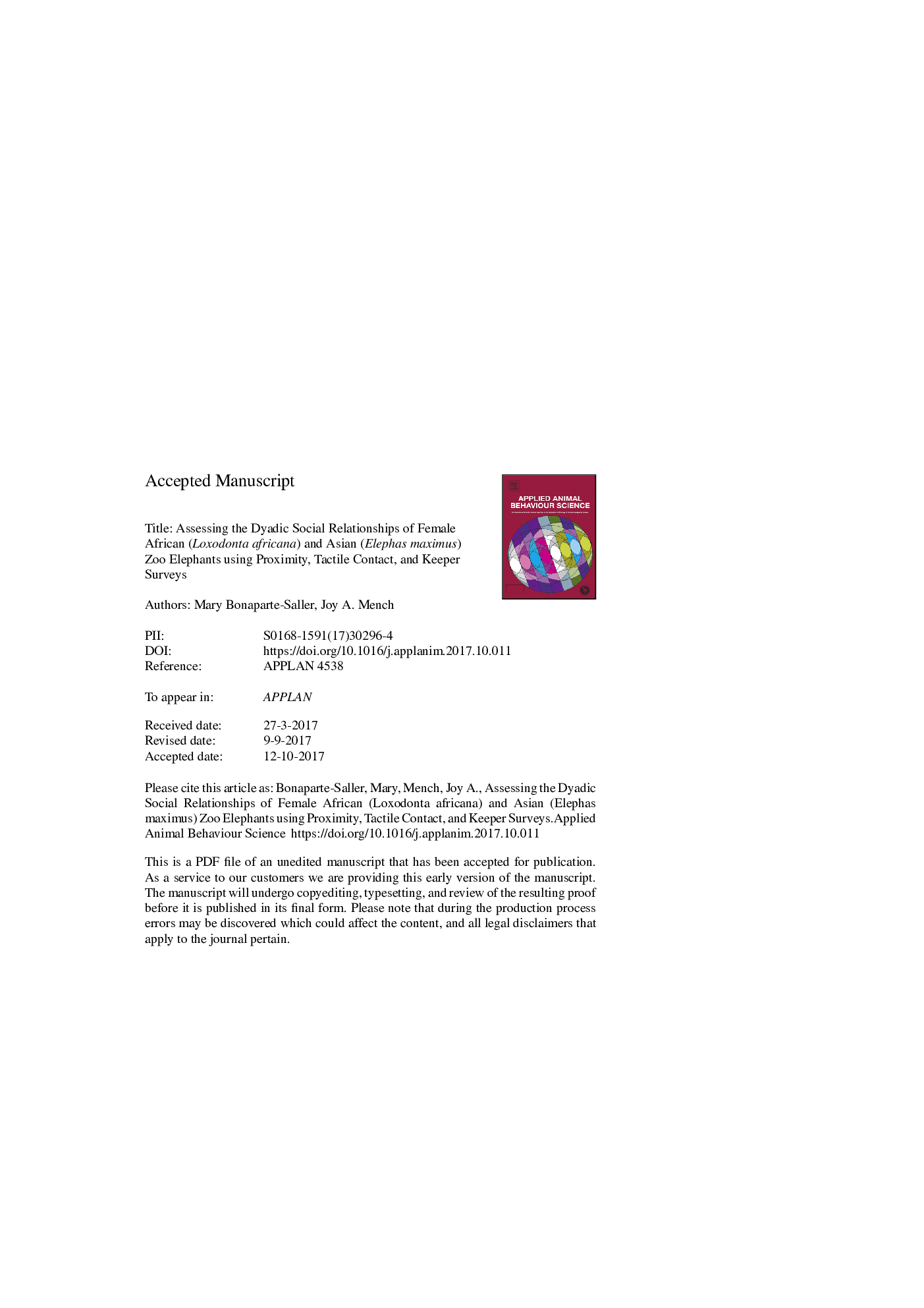| Article ID | Journal | Published Year | Pages | File Type |
|---|---|---|---|---|
| 8882847 | Applied Animal Behaviour Science | 2018 | 26 Pages |
Abstract
Understanding the affiliative social relationships, or bonds, between zoo elephants has implications for both their welfare and management, yet there is limited work assessing and describing these bonds. Consequently, there is a need for the development of a reliable assessment tool. We used multiple metrics of proximity and tactile contact, as well as keeper surveys, to assess the social bond strength of 41 elephant dyads from 22 different zoos. Survey descriptions of social bond strength were based on previous research and included proximity and separation-reunion behaviors between individuals in a dyad. Approximately half of the elephant dyads in our study were rated as having a “strong” or “strongest” bond by keepers, who showed excellent agreement in their ratings of elephant bond strength (ICC(1,k) = 0.82). Elephant dyads that spent more time in proximity (within two elephant body lengths), and those that were more consistent in this behavior across time had an increased predicted probability of being rated as having a “strong or strongest bond” by keepers (p < 0.001; p = 0.002; respectively). Affiliative tactile contact within dyads, described using duration, diversity, symmetry, and variability metrics, was not significantly related to keeper assessments of dyad bond strength. On average, proximity within dyads occurred more often and was less variable than dyads' tactile behaviors. Our results suggest that tactile contact may play a more limited role in the maintenance of zoo elephant social bonds than proximity; however, additional research is needed to confirm this. Additionally, this study suggests that keepers are accurately assessing the proximity behavior of their elephants, highlighting the potential of this survey tool to reliably measure the social bond strength of zoo elephant dyads.
Keywords
Related Topics
Life Sciences
Agricultural and Biological Sciences
Animal Science and Zoology
Authors
Mary Bonaparte-Saller, Joy A. Mench,
